The end users of a web application need to verify that their browsers received the complete message-body from the web server.
Which HTTP header will accomplish this?
An LTM Specialist has a OneConnect profile and HTTP profile configured on a virtual server to load balance an HTTP application.
The following HTTP headers are seen in a network trace when a client connects to the virtual server:
Clientside:
GET / HTTP/1.1
Host: 192.168.136.100
User-Agent: Mozilla/5.0
Accept: text/html,application/xhtml+xml,application/xml;q=0.9,*/*;q=0.8
Accept-EncodinG. gzip, deflate
Connection: keep-alive
Serverside:
HTTP/1.1 200 OK
DatE. 5 Jun 1989 17:06:55 GMT
Server: Apache/2.2.14 (Ubuntu)
Vary: Accept-Encoding
Content-EncodinG. gzip
Content-LengtH. 3729
X-Cnection: close
Content-TypE. text/html
The LTM Specialist notices the OneConnect feature is working incorrectly.
Why is OneConnect functioning incorrectly?
-- Exhibit –

-- Exhibit --
Refer to the exhibit.
An LTM Specialist configures a virtual server that balances HTTP connections to a pool of three application servers. Approximately one out of every three connections to the virtual server fails.
Which two actions will resolve the problem? (Choose two.)
An LTM Specialist is investigating reports from users that SSH connections are being terminated unexpectedly. SSH connections are load balanced through a virtual server. The users experiencing this problem are running SQL queries that take upwards of 15 minutes to return with no screen output. The virtual server is standard with a pool associated and no other customizations.
What is causing the SSH connections to terminate?
An LTM Specialist has configured a virtual server for www.example.com, load balancing connections to a pool of application servers that provide a shopping cart application. Cookie persistence is enabled on the virtual server. Users are able to connect to the application, but the user's shopping cart fails to update. A traffic capture shows the following:
Request:
GET /cart/updatecart.php HTTP/1.1
Host: www.example.com
Connection: keep-alive
Cache-Control: max-age=0
User-Agent: Mozilla/5.0 (Macintosh; Intel Mac OS X 10_7_5) AppleWebKit/537.4 (KHTML, like Gecko) Chrome/22.0.1229.94 Safari/537.4
Accept: text/html,application/xhtml+xml,application/xml;q=0.9,*/*;q=0.8
Accept-EncodinG. gzip,deflate,sdch
Accept-LanguagE. en-US,en;q=0.8
Accept-Charset: ISO-8859-1,utf-8;q=0.7,*;q=0.3
CookiE. BIGipServerwebstore_pool=353636524.20480.0000
Response:
HTTP/1.1 200 OK
DatE. Wed, 24 Oct 2012 18:00:13 GMT
Server: Apache/2.2.22 (Ubuntu)
X-Powered-By: PHP/5.3.10-1ubuntu3.1
Set-CookiE. cartID=647A5EA6657828C69DB8188981CB5; path=/; domain=wb01.example.com
Keep-AlivE. timeout=5, max=100
Connection: Keep-Alive
Content-TypE. text/html
No changes can be made to the application.
What should the LTM Specialist do to resolve the problem?
An LTM device is monitoring three pool members. One pool member is being marked down.
What should the LTM Specialist enable to prevent the server from being flooded with connections once its monitor determines it is up?
-- Exhibit –
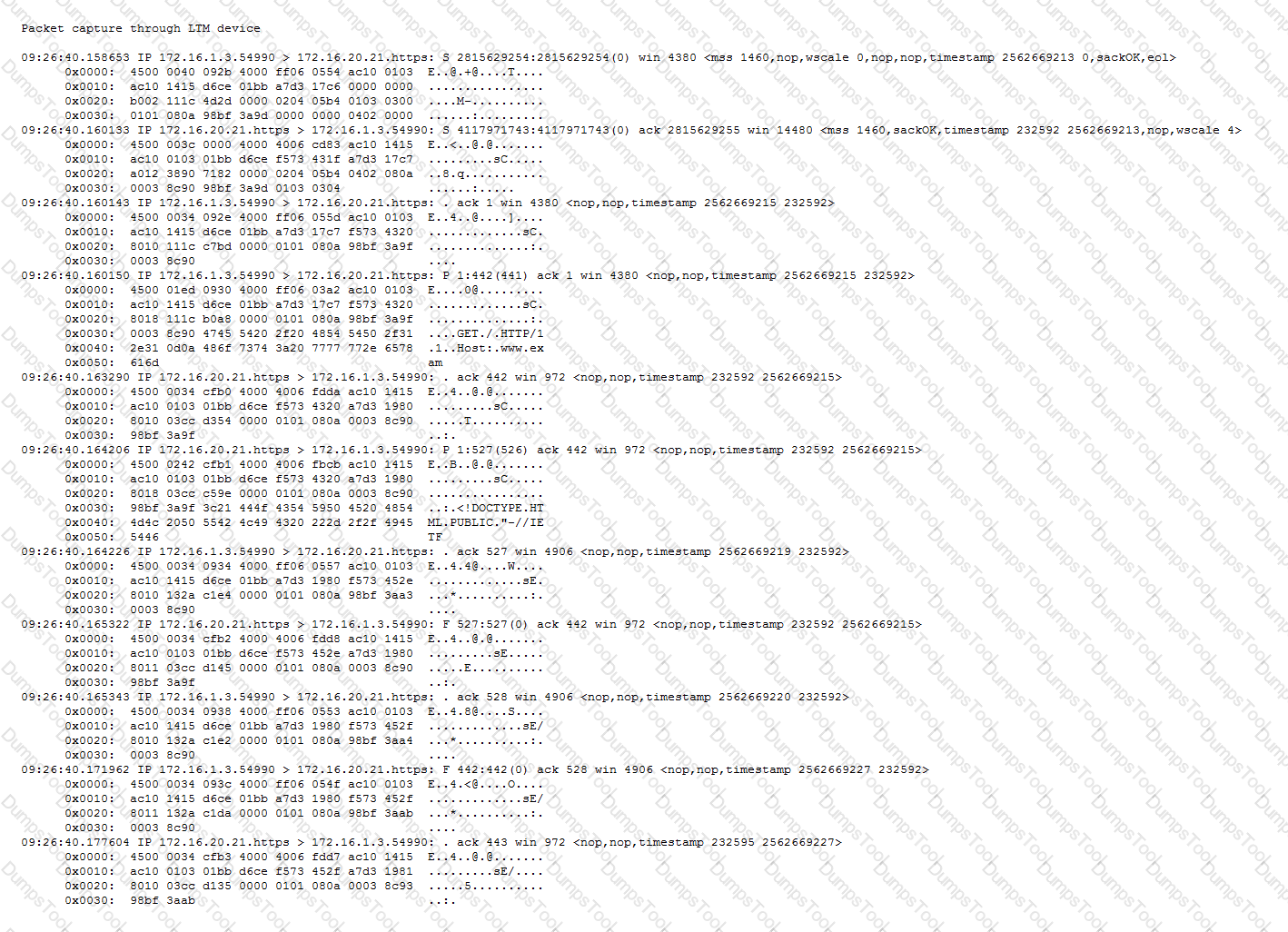

-- Exhibit --
Refer to the exhibits.
An LTM Specialist has configured a virtual server to distribute connections to a pool of application servers and to offload SSL processing. The application fails to work as expected when connecting to the virtual server. It does work when clients connect directly to the application. Two packet captures were taken at the application server.
What is the root cause of the problem?
An LTM device pair is configured for failover and connection mirroring. The LTM devices are configured with virtual servers for HTTP, HTTPS with SSL offload, and SSH. An event occurs that causes a failover. HTTP and SSH sessions active at the time of failover remain active, but HTTPS sessions are dropped.
What is the root cause of this problem?
An LTM Specialist configures the following iRule on an LTM device:
when HTTP_REQUEST {
if {[string tolower [HTTP::uri]] contains "/URI1/" } {
pool Pool1
}
elseif {[string tolower [HTTP::uri]] contains "/URI2/" } {
pool Pool2
}
elseif {[string tolower [HTTP::uri]] contains "/URI3/" } {
pool Pool3
}
else { pool Pool4}
}
Given the following request: http://www.example.comURI1/index.html?fu=bar &pass=1234
Which pool will be selected by the iRule?
An LTM Specialist has been asked to configure a virtual server to distribute connections between a pool of two application servers with addresses 172.16.20.1 and 172.16.20.2. The application servers are listening on TCP ports 80 and 443. The application administrators have asked that clients be directed to the same node for both HTTP and HTTPS requests within the same session.
Virtual servers vs_http and vs_https have been created, listening on 1.2.3.100:80 and 1.2.3.100:443, respectively.
Which configuration option will result in the desired behavior?
An LTM Specialist is setting up a monitor for an HTTP 1.1 server. The response to a GET / is:
HTTP/1.1 302 Moved Temporarily
Location: http://www.example.com/new/location.html
Which send string settings should the LTM Specialist use to force a proper response?
An LTM Specialist configured a virtual server to load balance a custom application. The application works when it is tested from within the firewall but it fails when tested externally. The pool member address is 192.168.200.10:80. A capture from an external client shows:
GET /index.jsp HTTP/1.1
Host: 207.206.201.100
User-Agent: Mozilla/5.0 (Windows NT 6.1; WOW64; rv:15.0) Gecko/20100101 Firefox/15.0.1
Accept: text/html,application/xhtml+xml,application/xml;q=0.9,*/*;q=0.8
Connection: keep-alive
HTTP/1.1 302 Found
DatE. Wed, 17 Oct 2012 23:09:55 GMT
Server: Apache/2.2.15 (CentOS)
Location: http://192.168.200.10/user/home.jsp
Content-LengtH. 304
Connection: close
What is the solution to this issue?
-- Exhibit –
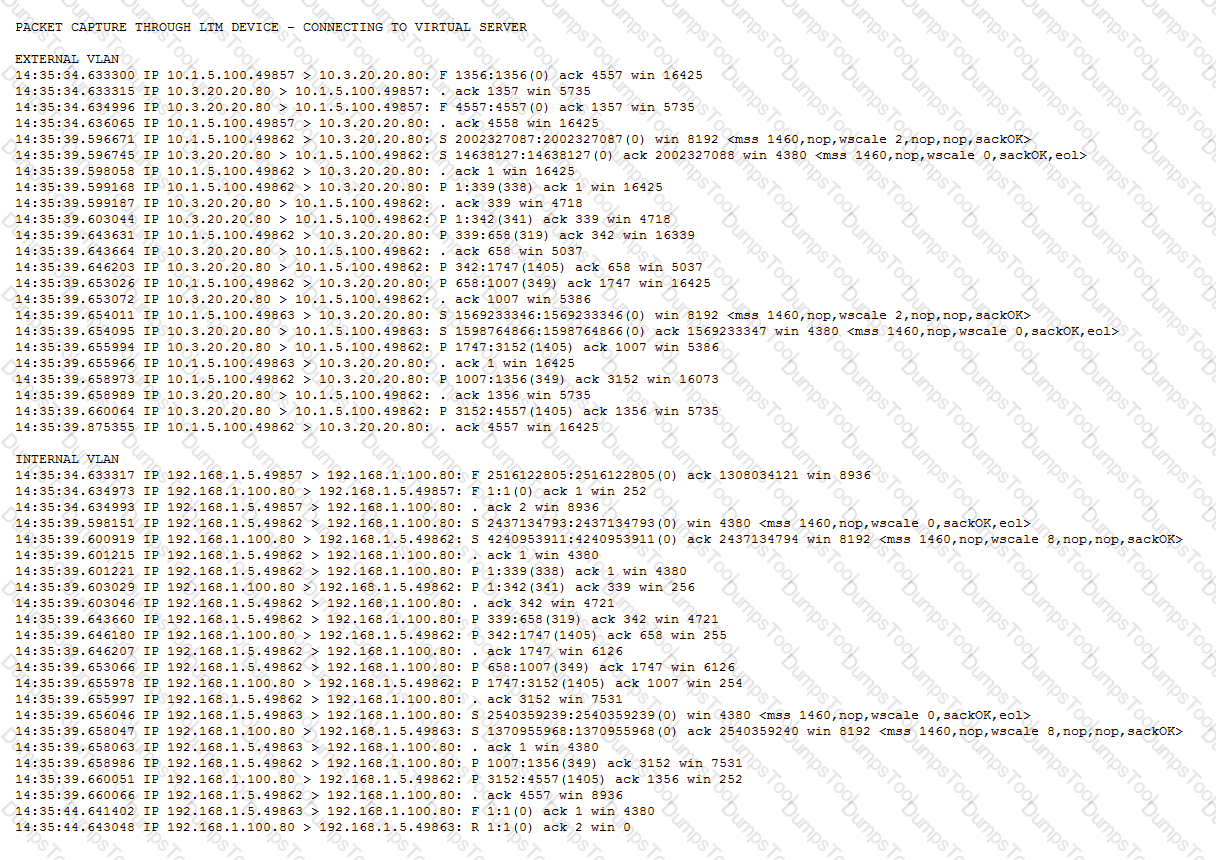

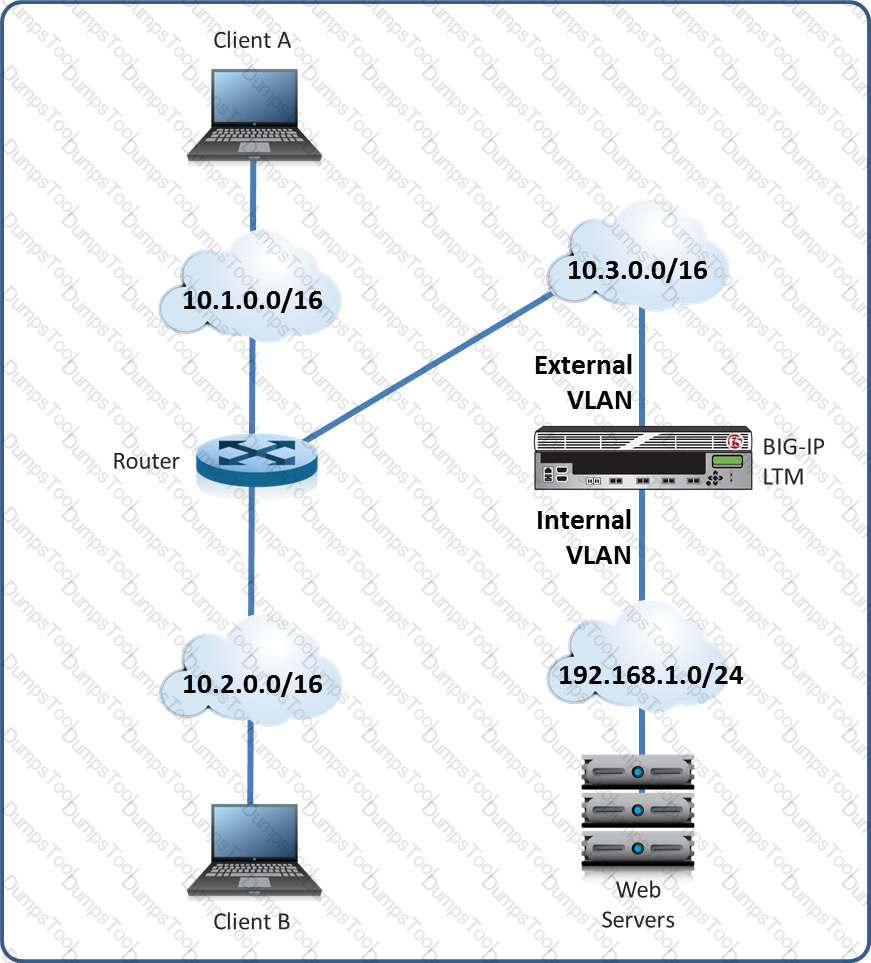
-- Exhibit --
Refer to the exhibits.
Users are able to access the application when connecting to the virtual server but are unsuccessful when connecting directly to the application servers. The LTM Specialist wants to allow direct access to the application servers.
Why are users unable to connect directly to the application servers?
An LTM Specialist configures an HTTP monitor as follows:
ltm monitor http stats_http_monitor {
defaults-from http
destination *:*
interval 5
recv "Health check: OK"
send "GET /stats/stats.html HTTP/1.1\\r\\nHost: www.example.com\\r\\nAccept-EncodinG. gzip, deflate\\r\\nConnection: close\\r\\n\\r\\n"
time-until-up 0
timeout 16
}
The monitor is marking all nodes as down. A trace of the HTTP conversation shows the following:
GET /stats/stats.html HTTP/1.1
Host: www.example.com
Accept-EncodinG. gzip, deflate
Connection: close
HTTP/1.1 401 Authorization Required
DatE. Tue, 23 Oct 2012 19:38:56 GMT
Server: Apache/2.2.15 (Unix)
WWW-AuthenticatE. Basic realm="Please enter your credentials"
Content-LengtH. 480
Connection: close
Content-TypE. text/html; charset=iso-8859-1
Which action will resolve the problem?
-- Exhibit –
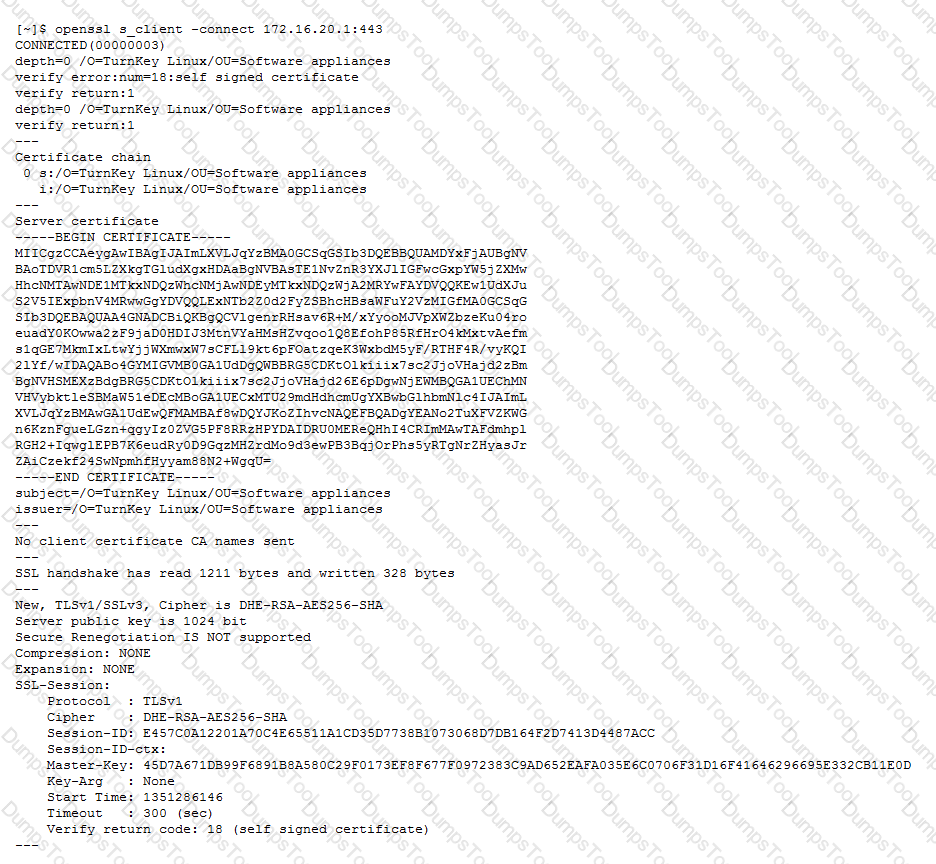
-- Exhibit --
Refer to the exhibit.
An LTM Specialist is troubleshooting an issue with SSL and is receiving the error shown when connecting to the virtual server. When connecting directly to the pool member, clients do NOT receive this message, and the application functions correctly. The LTM Specialist exports the appropriate certificate and key from the pool member and imports them into the LTM device. The LTM Specialist then creates the Client SSL profile and associates it with the virtual server.
What is the issue?
When re-licensing an LTM device from the command line interface, which tmsh command should the LTM Specialist use to generate the required information to provide on the F5 licensing portal?
-- Exhibit –
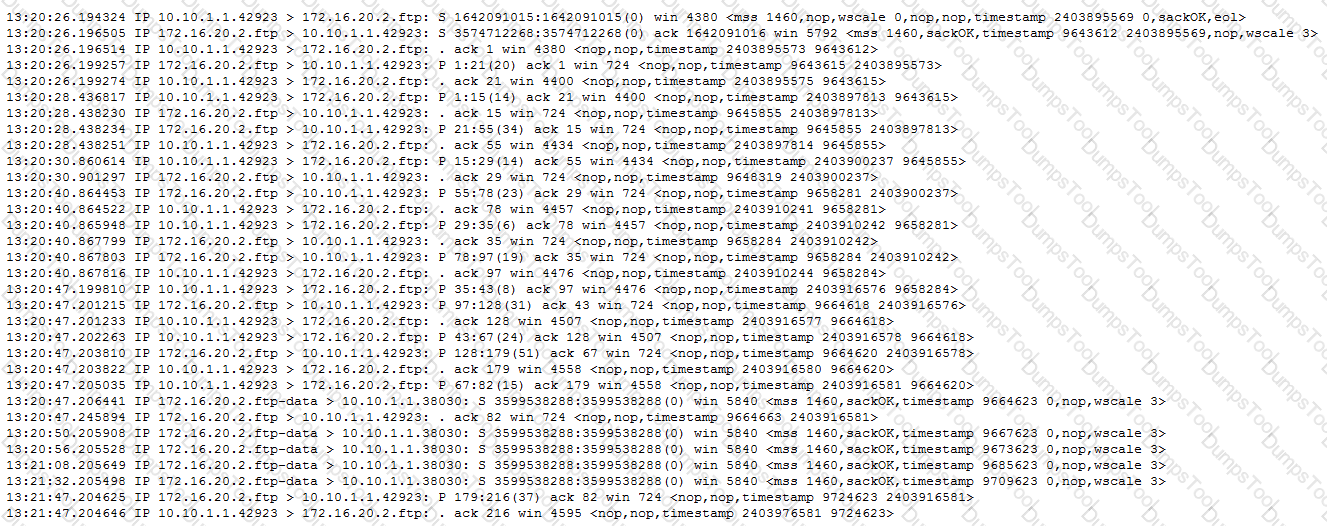
-- Exhibit --
Refer to the exhibit.
An LTM Specialist configures a virtual server to load balance to a pool of FTP servers. File transfers are failing. The virtual server is configured as follows:
ltm virtual ftp_vs {
destination 10.10.1.103:ftp
ip-protocol tcp
mask 255.255.255.255
pool ftp_pool
profiles {
tcp { }
}
vlans-disabled
}
Which change will resolve the problem?
-- Exhibit –
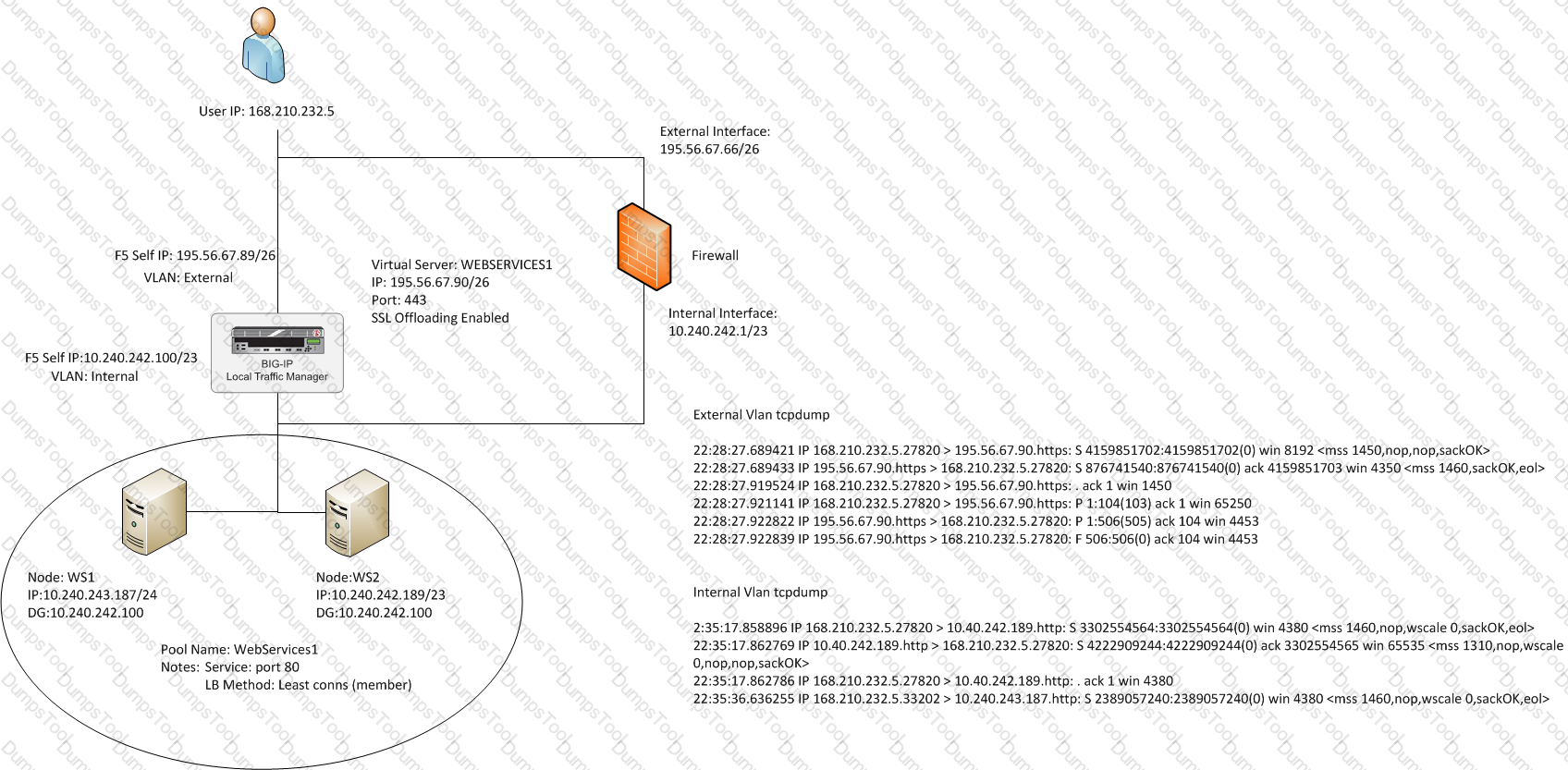
-- Exhibit --
Refer to the exhibit.
An LTM Specialist has a virtual server set up on the LTM device as per the exhibit. The LTM Specialist receives reports of intermittent issues. Some clients are connecting fine while others are failing to connect.
The LTM Specialist does a tcpdump on the relevant interfaces, with the following results extracted:
What is causing the intermittent issues?
An LTM Specialist has installed a hotfix that updated the SCCP firmware package.
Which command will ensure that the host subsystem and SCCP reboot?
An LTM Specialist is troubleshooting a problem on an eCommerce website. The user browses the online store using port 80, adding items to the shopping cart. The user then clicks the "Checkout" button on the site, which redirects the user to port 443 for the checkout process. Suddenly, the user's shopping cart is shown as empty. The shopping cart data is stored in memory on the server, and the default source address persistence profile is used on both virtual servers.
How should the LTM Specialist resolve this issue?
An IT administrator wants to log which server is being load balanced to by a user with IP address 10.10.10.25.
Which iRule should the LTM Specialist use to fulfill the request?
-- Exhibit –

-- Exhibit --
Refer to the exhibit.
An LTM Specialist has created a virtual server to load balance traffic to a pool of HTTPS servers. The servers use client certificates for user authentication. The virtual server has clientssl, serverssl, and http profiles enabled. Clients are unable to connect to the application through the virtual server. Clients are able to connect to the application servers directly.
What is the root cause of the problem?
A web application requires the client to provide the destination server and service identification.
Which HTTP header will supply this information?
Which command will identify the active LTM device currently handling client traffic?
The LTM device is configured for RADIUS authentication. Remote logins are failing and the LTM Specialist must verify the RADIUS configuration.
How should the LTM Specialist check the RADIUS server and shared secret configured on the LTM device?